
26 minute read
Engineering controls for dust in bulk material processing
ENGINEERING CONTROLS
FOR DUST IN BULK MATERIAL PROCESSING
Sean Kinder, Field Applications Engineer, Kinder Australia
Dust is important in the production of materials and will be impossible to eliminate within the bulk materials handling industry — it does need management, though. By utilising engineering controls and taking progressive and innovative steps, dust emissions and safety standards can be improved.
Fines — powdery material produced by a crushing or grinding process, generally equal to or less than 5 mm in size — are a necessary requirement for almost all bulk material processing industries. Construction industries require fine aggregate from quarries, which is used in blending road base/manufactured sands for concrete and powered cements, and acts as a binding agent. To extract gold, copper, lead, zinc, nickel and other precious metals from their parent ores in a mine, the processing plant must grind the material to an ultrafine particulate where it can be separated into a concentrate via floatation and/or electrochemical type processes. Crushing and refining of bauxite into alumina powders is the manufacturing technique of smelting aluminium. Pulverising coke and coal into a fine powder increases its material surface area, therefore allowing it to burn more quickly, and is a process used in blast furnaces and power generation. Dust is the word utilised to describe uncontrollable fugitive emission from a process that escapes into the environment.
Dangers

Given its physical properties, dust can cause respiratory and cardiovascular disorders. In 2020, to reduce the risks of silicosis, an agreed workplace exposure standard (WES) for respirable crystalline silica was reduced to an eight-hour time-weighted average of 0.05 mg/m3; the reduced silica dust WES was implemented in most jurisdictions from 1 July 2020, according to Safe Work Australia. Coalmines also must contend with the hazardous dust particles where prolonged exposure can lead to coal workers’ pneumoconiosis or chronic obstructive pulmonary disease. According to SWA, new standards of exposure will be set by October 2022 with a reduced limit of 1.5 mg/m3. In order to manage risks, organisations and individuals should perform a risk assessment that may involve utilising the ‘Hierarchy of Control’ (elimination, substitution, engineering controls, administrative controls and personal protective equipment [PPE]). From this hierarchy: elimination and substitution are borderline impossible given that most bulk material handling process facilities require the dust to obtain their final product; therefore, engineering and administration controls must be utilised with PPE technologies.
Similar to the behaviour of liquids, dust has been observed to occur mostly when presented with an unnatural excitation of its surrounding environment due to turbulence. In a processing plant, for example, dust forms in crushing and screening chambers and poorly designed conveyor transfer chutes. It’s observed that if the output air pressure is not equal to the introduced air pressure, and lighter than the processed asset, material in the form of dust will fill all voids in the system and escape via any means possible (ie, holes, gaps). Being a lighter material, fines, when excited, take longer to settle than the bulk handled. When designs don’t take into consideration the settling time of the finer particles, they remain in the atmosphere resulting in emission. In some cases, the air pressure can be so great that it will expel from the system at a higher volume than the design capacity of the system, shown in Figure 1.

IN ORDER TO MANAGE RISKS, ORGANISATIONS AND INDIVIDUALS SHOULD PERFORM A RISK
ASSESSMENT THAT MAY INVOLVE UTILISING
THE ‘HIERARCHY OF CONTROL’ … FROM THIS
HIERARCHY: ELIMINATION AND SUBSTITUTION
ARE BORDERLINE IMPOSSIBLE GIVEN THAT
MOST BULK MATERIAL HANDLING PROCESS
FACILITIES REQUIRE THE DUST TO OBTAIN THEIR
FINAL PRODUCT; THEREFORE, ENGINEERING AND ADMINISTRATION CONTROLS MUST BE UTILISED
WITH PPE TECHNOLOGIES.

©stock.adobe.com/au/ suvorovalex
Emission points and engineering controls
Skirting Engineering controls are the first line of defence against dust. To minimise dust emissions from conveyor transfer points, a skirting system is installed in the loading zones to seal accordingly. Skirting systems are generally made up of a hard-internal primary skirt (which holds the larger asset), protecting it from damaging the secondary skirting. Secondary skirting (made of rubber or polyurethane) seals the transfer point from emitting dust into the environment. Unfortunately, the skirting systems are often a rushed component of the overall conveyor design, being inserted almost during the commissioning phase of projects, which proves a lack understanding. Generally, an area of cost cutting and poor design, transfer points and skirting systems are one of the first locations to be reviewed during the first months of a new operation. On a conveyor system, these systems would be considered one of the most frequently complained about locations due to their confined working conditions and dusty environments (which require continuous cleaning by plant operators).
Depending on the application, there are a variety of different types of skirtings that can be installed. Selection should always be considered early on during the design stages of the project plan as a number of factors need to be taken into consideration to ensure that an engineered control is being provided. Some skirts apply a vertical seal, whereas others lay-in and offer selfadjustment. Mounting and clamping systems also vary depending on the allowable heights provided by the surrounding steelwork. Skirting should never be fouled by ‘bolting or screwing through’. By doing this, once the skirting wears away, gaps will form and the skirting will not be able to be adjusted, leaving a permanent dust emission point until the skirting is fully replaced. Depending on production requirements, this might be left in this position for several weeks. Freeboard An important subject that is often overlooked is that of ‘freeboard’, the distance between the outer edge of the chute and the edge of the conveyor belt. This is the space where the secondary dust skirting is installed. Often, in the event of higher loading on to the conveyor belt and increasing throughput, freeboard is sacrificed. This is very problematic for a secondary skirting system. In the event that the conveyor belt mistracks, which is common in transfer points too (due to many factors), it will creep under the skirting, popping the skirting material and creating gaps. This allows dust to escape and results in emission. An added dilemma is when the conveyor belt tracks back to a central position (or even the other side, if conditions are worse). In this scenario, the conveyor belt is known to cut through and prematurely fail the popped skirt. In short, freeboard should always be considered in conveyor transfer point design.
Figure 1.
ENGINEERING CONTROLS ARE THE FIRST LINE
OF DEFENCE AGAINST DUST.

Sagging Conveyor belt sag between idlers in transfer points is another commonly observed dust emission point on conveyor systems. Sagging is the result of material loading on to the flexible conveyor belt. The weight of the bulk material enables the conveyor belt to dip in unsupported areas. Although sag is generally only a few millimetres, it is enough for a gap to form between the secondary skirting and the conveyor belt, resulting in emission. Sag can be eliminated by utilising a conveyor belt support system or impact bed (if the application includes large primary or secondary lump bulk materials). Conveyor design Compromising the skirting system and conveyor belt performance itself, some conveyors are designed and fabricated without the understanding of a designated transition and transfer point. The transition point is defined as the area in which the conveyor belt changes its profile from 0 degrees (horizontal when it wraps around a pulley) to the desired troughing angle. In confined locations, some conveyors have been seen to have ultra-short, borderline non-existent transition points. This results in the bulk material impacting and loading on to the conveyor belt, while the conveyor belt is forming from a 0- to 35-degree (or steeper) trough profile. Attempting to apply a secondary skirting system to an application that is changing its profile seldom functions as intended and generally always results in dust emissions. Covers In the bulk materials handling industry, it has been observed that a successful method of containing dust without the requirement for added moisture is with the use incorporation of conveyor belt covers. Conveyor belt covers are not affected by wind and reduce dust emission when carrying the bulk material at height or across long exposed areas. This engineering control forms a barrier between the conveyor and environment, without consuming resources (such as water). Water Another common way of controlling dust is with the addition of water. By adhering to the dust particles, clumping them together and increasing the weight, water quickly supresses the dust, slowing its projection velocity, causing it to lose momentum and allowing it to fall into the material flow. This technique — when implemented well by professionals — can dramatically reduce the dust emissions in many applications, if applied carefully and methodically. Attempting to simply ‘add water’ via a hose without taking into consideration many other parameters can lead to costly issues including: oversaturation of product (material loses specification) or plant blockage due to screens blinding or chutes hanging-up.
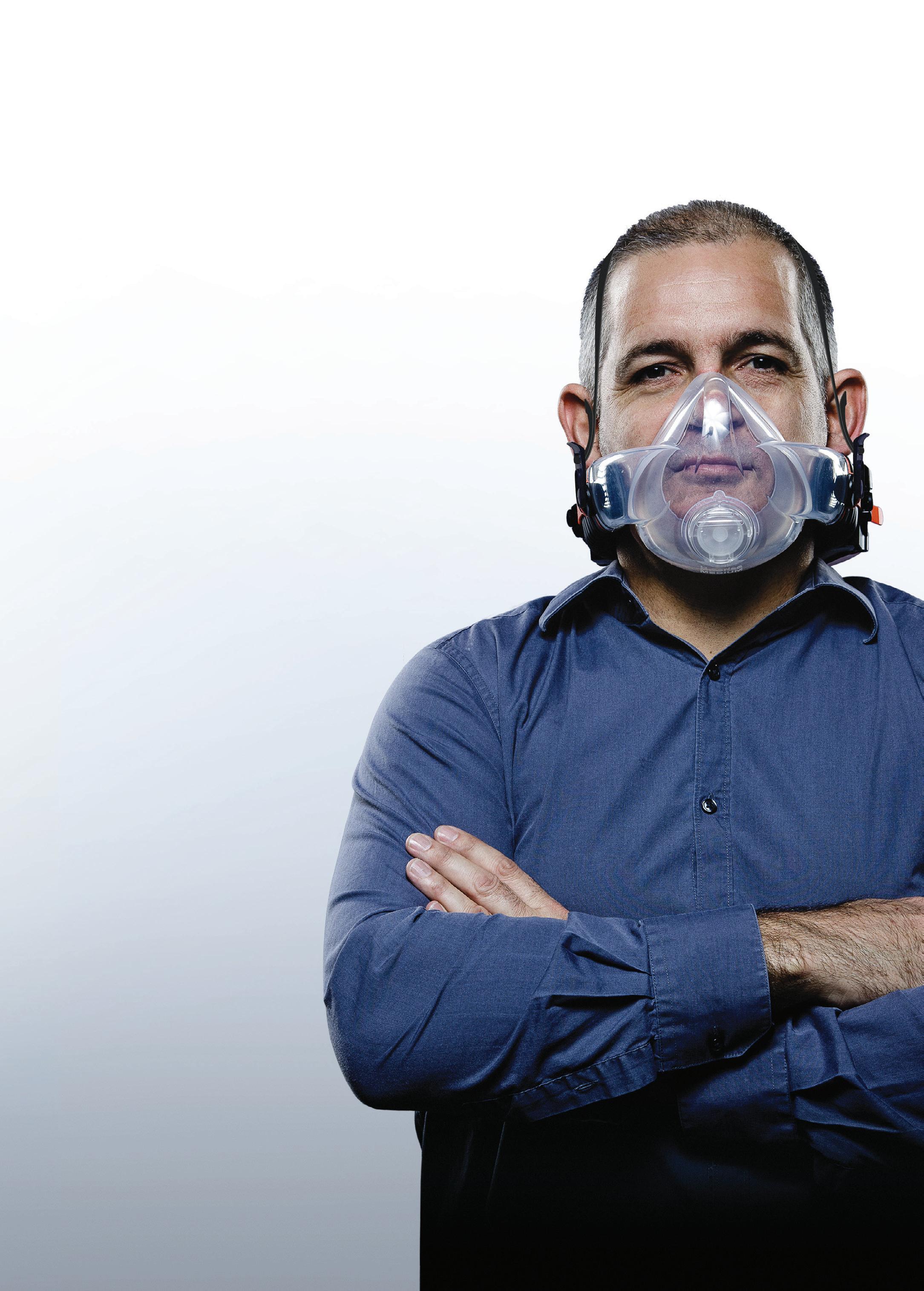
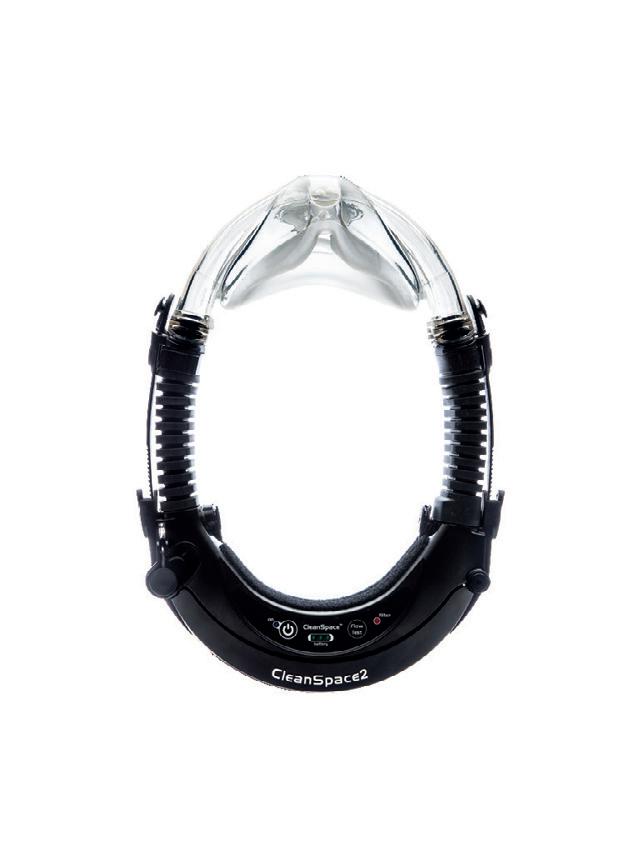


CASE
STUDY Australian university boosts infrastructure safety with new facility
©stock.adobe.com/au/Lev
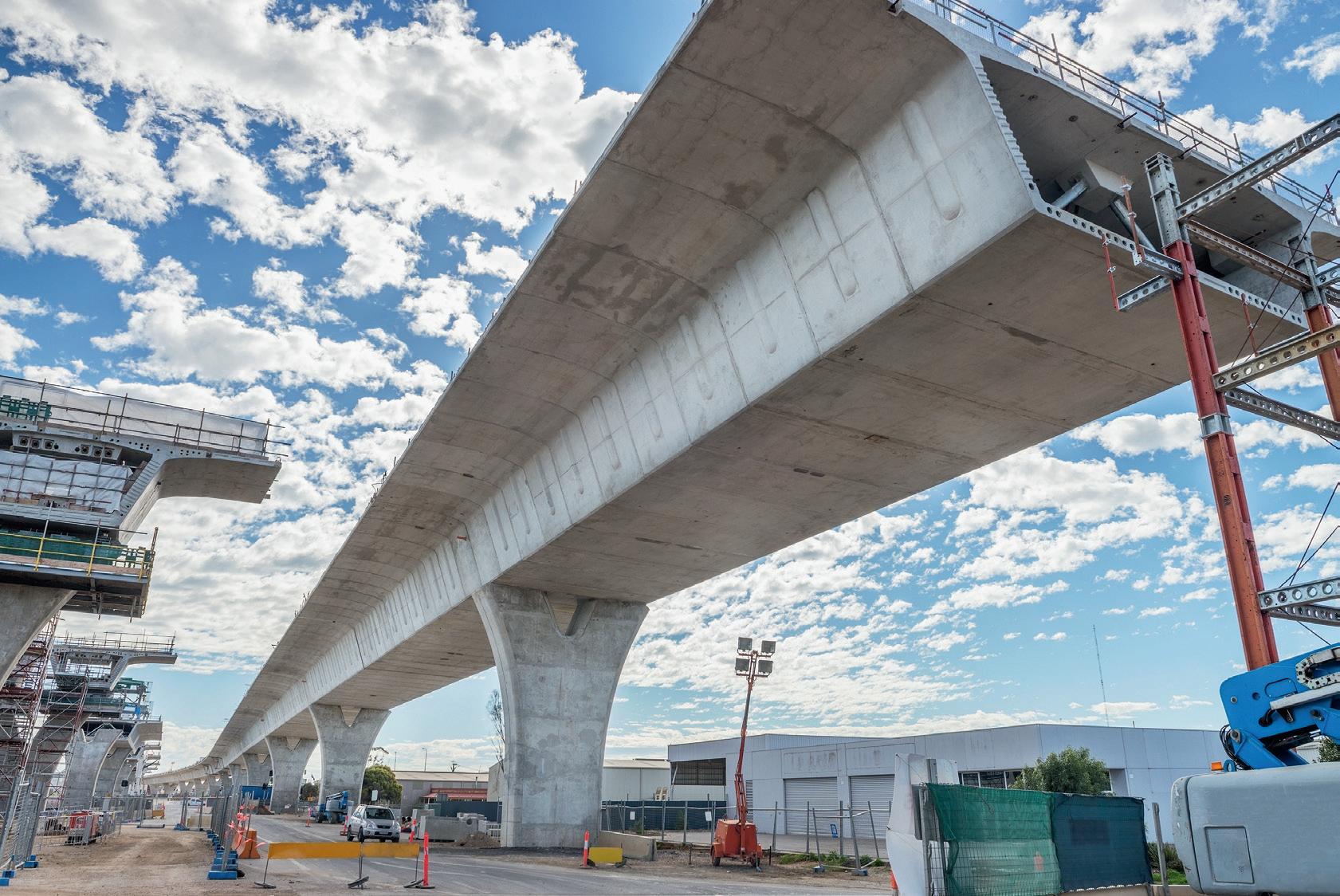
The National Drop Weight Impact Testing Facility (NDWITF) has been launched at Monash University. The facility is designed to boost the structural safety of present and future high-risk infrastructure, with technology that can observe the behaviour of elements under severe impact loading of up to two tonnes. The facility has the capacity to assess the structural safety of high-risk infrastructure across Australia, including railway networks, tunnels and bridges, buildings and construction materials, as well as road safety barriers and protective equipment. The NDWITF will also support research on construction, mining, geomechanics, energy and the environment. Fields of application and interest include construction materials under high strain loading, structural dynamics and engineering, mining excavation and rock fragmentation.
Enabled by an Australian Research Council (ARC) Linkage Infrastructure, Equipment and Facilities (LIEF) grant, the NDWITF is a Monash-led collaboration involving six other universities. The facility, located in Monash’s Department of Civil Engineering, is accessible to all researchers, students and industry. Associate Professor Amin Heidarpour, Head of Structural Engineering at Monash, led this project, and said the engineering facility will provide a national research focus on the behaviour of construction materials and systems under impact loading with unique observation techniques. Associate Professor Heidarpour said the facility will advance understanding of the fundamental behaviour of critical infrastructure exposed to impact loading and will foster innovations in design and construction.
“Understanding the behaviour of construction and geomaterials under dynamic loading is essential in dealing with various engineering problems, such as protective structures design and impact cratering, excavation and mining, blasting and fragmentation, and risk management,” Associate Professor Heidarpour said. The catastrophic failure of construction materials caused by extreme impact conditions, such as natural disasters and man-made hazards, has justified the need to carry out comprehensive research to develop infrastructure with new, innovative, cost-effective and environmentally friendly materials, Monash stated. Associate Professor Heidarpour also said the facility could ensure that Australia is at the forefront of impact engineering research internationally, thereby promoting local innovation and industrial competitiveness.
“Thanks to the ARC LIEF grant, the NDWITF will provide economic, environmental and social benefits to Australia as it will undertake research in robust, resilient, cost-effective and environmentally friendly impact engineering applications,” Associate Professor Heidarpour said. Austeng, a Geelongbased engineering company, is a key partner in this project and engineered, manufactured and installed the facility in line with Monash’s requirements. “Austeng was proud to be part of this important project and collaborate with Monash University and I am delighted our team was able to deliver a practical and workable solution given the stringent performance parameters set by Monash and the significant engineering challenges involved,” Austeng Managing Director Ross George said.
Monash University www.monash.edu


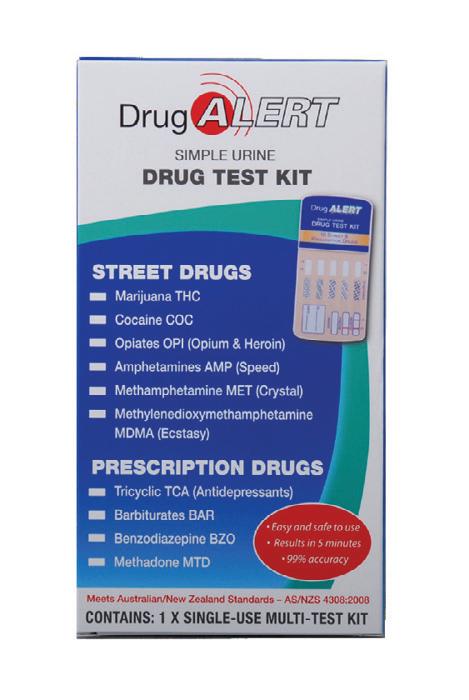
CASE
STUDY Campaign aims to reduce musculoskeletal injuries in transport industry
SafeWork SA has launched a safety campaign focused on reducing musculoskeletal injuries and slips, trips and falls across the road freight transport industry. As part of the campaign, SafeWork SA is visiting a number of road freight transport depots and conducting an audit of safety control measures that are required to be in place to minimise the risk of workers sustaining musculoskeletal disorders. The focus will also be on factors that contribute to slips, trips and falls, including training and safe use of correct manual handling techniques.
According to Safe Work Australia, musculoskeletal injuries account for 46% of injuries in the road transport industry, most commonly caused by muscular stress while handling objects (18%), followed by muscular stress while lifting, carrying or putting down an object (15%). Slips, trips and falls on the same level contributed to 13% of the injury statistics. Workers in the transport industry aged 55–64 years recorded the highest rate for serious injury claims, followed by workers aged 45–54 years. Under the Work Health and Safety Act 2012 (SA), business owners are responsible for providing a safe work environment and safe systems of work, which include adequate training and supervision for all workers, ensuring equipment is in safe working order and appropriately managing risks to prevent injuries. SafeWork SA Executive Director Martyn Campbell said compliance audits are a key way that SafeWork SA contributes to improving safety in South Australian workplaces and encouraged all businesses to be proactive about safety. “During our visits, we work with the business to identify the challenges and hazards unique to their workplace and discuss the best safety solution for the situation,” Campbell said. “Where we find a safety issue that breaches WHS requirements, our inspectors will issue a compliance notice.”
To comply with legislative requirements, businesses must identify all hazards specific to their workplace and have appropriate control measures in place to prevent or reduce the risk of harm to workers and the public. Safety plans must also ensure that all hazards have been identified, with control measures in place. All workers must also receive adequate training and supervision, and all safety control measures must also be reviewed regularly.

©stock.adobe.com/au/TTstudio
Short sleeve active polo
NNT Uniforms have polo shirts in a range of colours, fabrics and cuts. One of the bestsellers in the range is the Active Polo, favoured for its relaxed fit and modern shape. Made from a combination of cotton and polyester, the Active Polo range is available in 10 colourways.
The cotton back provides comfort against the skin, while the polyester front increases the functionality of the polo. The shirt’s antibacterial finish makes its suitable for any workplace, BBQ or sporting activity. NNT Uniforms provides uniforms for the corporate, healthcare, hospitality and government industries. Its online store provides workwear and corporate apparel.
Workwear Group
www.workweargroup.com.au


Rescue training manikins
As a supplier of training manikins, LifeTec is committed to helping customers create training to equip their teams with the skills to react positively in an emergency.
LifeTec believes the most effective training simulates different scenarios as realistically as possible.
Manikins can help aid most research and rescue training (including casualty evacuation). Choosing the right size, weight and type of manikin to use is one of the keys to effective training.
LifeTec offers 11 categories of Rescue Manikin and 49 variants.
LifeTec Pty Ltd
www.lifetec.com.au
When you think temporary fencing ...

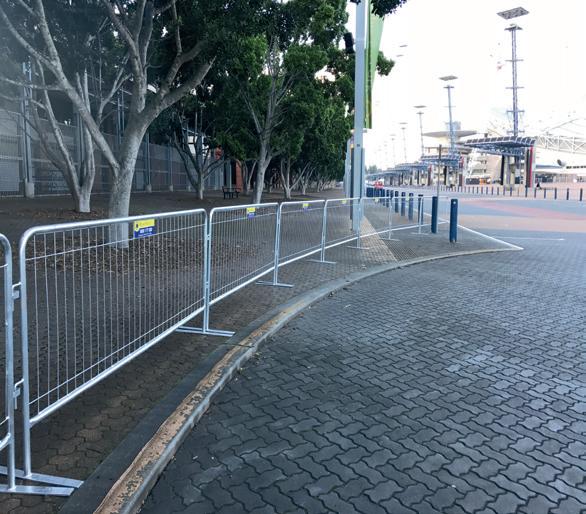
Crowd Control Barrier
We can tailor make your temporary fencing solution. We provide day hire, long term hire and temporary fencing for sale, and we’ll deliver direct to set and collect when you need it gone.
• Construction sites • Civil works • Mines • Festivals and Events • Shopping Centres • Warehouse and industrial space • Aged care facilities
Plastic Work Zone Barrier
Work Zone Barriers are a great solution for crowd control, footpath construction, pedestrian awareness, and as a work site barrier. The light weight plastic barrier can easily be installed and dismantled by one person and designed for easy storage and transport as it is stackable. The system is portable and each panel links together simply with a moulded pin and lock system. In bright safety orange with refl ective stickers, it is an effective barrier to establish no-go zones.
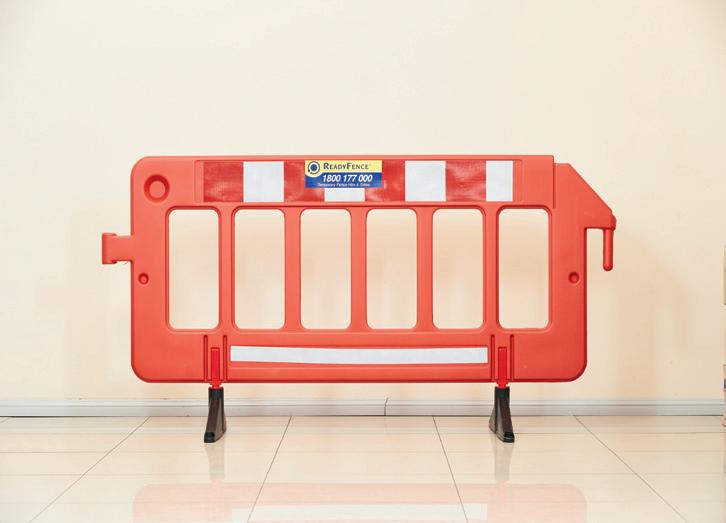
Steel Expandable Barrier
The Aluminium expandable barrier is a perfect solution to restrict unwanted pedestrian access and guide pedestrians safely around designated zones. This barrier system compacts down for storage and when fully expanded covers a 3.5m area and can be joined together to make longer restricted areas if required. Made from aluminium the Expandable Barrier is light weight and can be easily moved when not required. Perfect solutions for warehouses, car parks, distribution centres, storage areas, cool rooms, loading docks and ramps.
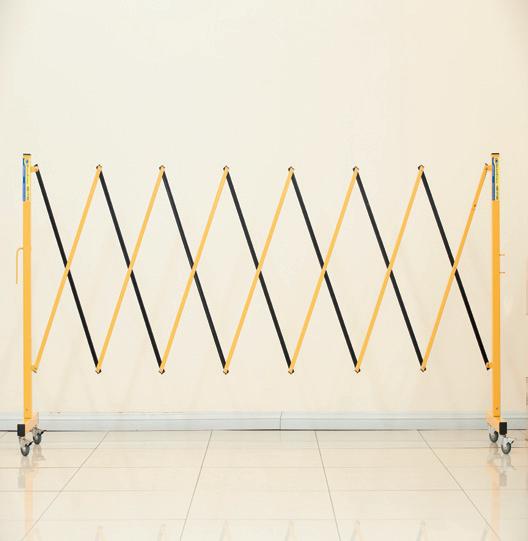
Plastic Expandable Barrier
A multipurpose and moveable system for all your pedestrian & traffi c control problems. This lightweight portable, expanding, barrier is compact and suitable for indoor or outdoor use. The plastic crowd control barrier is strong and can be fi lled with water to make it even more secure. Refl ective markers are fi tted to the barriers for night or low light visibility solutions. When fully extended, the unit is 2.5 metres wide. Perfect solution for constructions sites, warehouses, car parks, shopping centres, offi ces, aged care and child care centres.
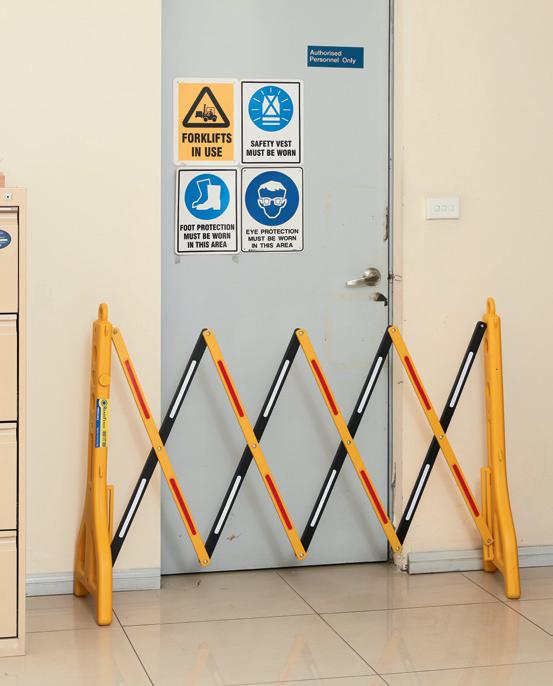
Pedestrian detection safety and warning system
The BodyGuard i-Tag pedestrian safety warning system is designed to ensure pedestrian staff are kept a safe distance from all mobile plant. The system separates people from vehicles by setting up a 360-degree safety exclusion zone around the vehicle that is adjustable from 2.5 to 9 m.
If a pedestrian gets too close to mobile plant, the driver gets a clear and unmistakeable human voice warning and high impact visual alert and the pedestrian Tag will vibrate. BodyGuard is suitable for improving safety in warehouses, workshops, outdoor yards and construction sites.
Magnetic mounting makes it easy to install without modifying the plant. The system is not impacted by steel, dirt, dust or water and can detect pedestrians wearing Tags through most solid objects (such as racking, brick and loads on forks).
The BodyGuard Pedestrian safety warning system has Australian (RMC) and Global certifications for safety, and compliance with RFI/EMI and EMC (CE Mark and R.E.D, FCC) standards. The system is Australian designed, manufactured and supported.
BodyGuard Safety Solutions
www.bodyguardsafety.com.au
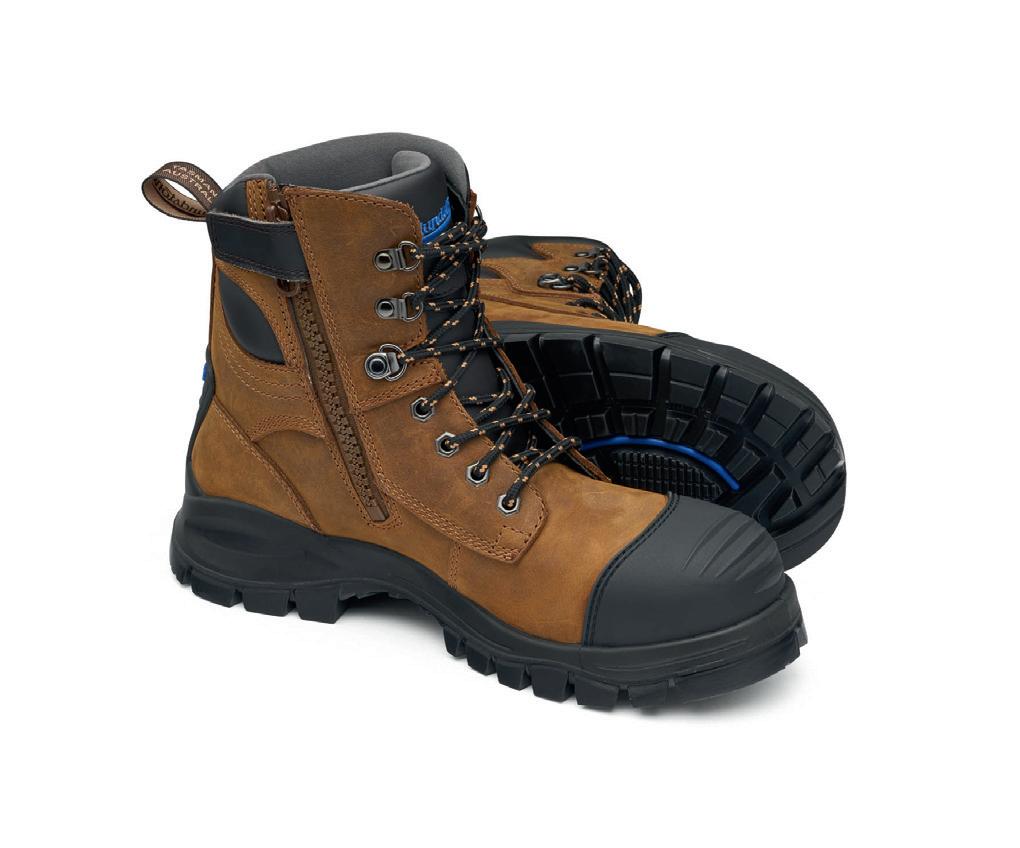

Zip-sided boot
Blundstone has launched the tough zip-sided #983 boot, offering a range of features. Available at selected retailers, the #983 provides underfoot protection with a lightweight, penetration-resistant insole. The lace-up design also provides ankle protection while the heavy-duty zip gives easy on, easy off convenience.
The #983 features a Crazy Horse water-resistant leather upper — a full nubuck leather that is buffed to achieve a smooth feel and finish. A wax is then applied to the surface, which provides a multi-tone, leaving a natural rustic finish. The boot also features a non-metallic penetration-resistant insole, which is typically manufactured from steel. However, the insole in the #983 is crafted using plasma-treated high-tenacity yarns. These insoles are capable of reducing punctures caused by small nails and other objects, and the use of non-metallic material in the insole allows for flexibility and comfort, due to its lightweight construction. As it can be sewn directly to the upper material, it enables protection to almost 100% of the surface of the sole.
The boot’s ergonomic fit and flexibility make it suitable for those who work in wrecking yards, construction sites and the recycling industry, as the penetration-resistant insole helps reduce the risk of sharp objects puncturing feet.
Blundstone Australia Pty Ltd
www.blundstone.com.au
Public access defibrillator
Early defibrillation is a critical component in treating sudden cardiac arrest (SCA). ZOLL offers automated external defibrillators (AEDs) that are designed with lay rescuers in mind. However, when SCA occurs, only half of the victims will initially require a shock, but all will need high-quality cardiopulmonary resuscitation (CPR). ZOLL AEDs include Real CPR Help technology, which prompts the user step by step through the rescue, providing real-time CPR feedback on the depth and rate of chest compressions to help the user deliver high-quality CPR.
The ZOLL AED 3 defibrillator is intended to be an invaluable investment in emergency preparedness. It is designed to give bystanders and rescuers the confidence to help in an SCA emergency and to provide continuous CPR to increase a victim’s chance of survival. The ZOLL AED 3 features: integrated paediatric rescue with a universal electrode pad design for both adults and children; Real CPR Help technology to provide real-time feedback to maximise CPR effectiveness; Wi-Fi connectivity to easily manage ZOLL AEDs, ensuring they are always ready for use; long-lasting batteries and pads (5 years) to reduce the frequency of maintenance; smart battery that automatically reports its power level status.
ZOLL Medical Australia
www.zoll.com.au

CUTTING EDGE SAFETY

AUSTRALIA’S NEW CUT RESISTANCE STANDARDS
A new Australian standard for gloves was published in December 2020; a hand protection expert explains why this is a game changer for gloves, the testing and the reduction of hand injuries.
Choosing the right safety gloves for your particular task is vital to ensure proper protection. Throughout most of the world, safety gloves are rated using the European Standard EN388, to determine their level of protection. The standard consists of a series of tests to assess gloves for their ability to withstand abrasion, cutting by a blade, tearing and puncture. The gloves are then rated based on the result.
The ‘Coup cut test’ for the old standard was conducted with a rotating blade, like a pizza cutter, under a standard weight with the glove material laid out on a fl at surface. However, the rise of new cut-resistant fi bre technology has uncovered limitations in the Coup test. Certain glove fi bres would dull the blade in the Coup test and attain a cut level which may not have been representative of the actual protection level. A new cut-level test was needed to refl ect the true cut level more accurately.
A cut test above the rest
The new standard, EN388:2016, was updated in November 2016 to apply a new test, ISO 13997, to the existing mechanical hazards performance tests. This upgrades the standard to be more relevant to modern real-life applications and fabrics. Now, Australian standards are catching up. The new standard was published in December 2020 and key features include:
• an additional cut (TDM-100) rating and an optional impact rating • Australian standards mirroring European standard EN388:2016 The new cut test is a game changer for safety gloves. It will more accurately rate protection where there is a higher risk of cut injuries. This means that gloves previously rated at level 5 may only give low to medium protection based on the new cut test (TDM-100). The new cut test method was adopted from the ISO 13997 standard to overcome those limitations. The new cut test is carried out using an instrument called a TDM100 machine. The material is placed on a convex surface and a straight blade is moved across the sample under specifi ed loads until the blade cuts through.
How will safety glove markings change?
Safety glove markings will be updated to include the results of the new ISO 13997 cut test. The current 4 performance values shown under the EN388 ‘Hammer Shield’ icon indicating Abrasion, Cut (Coup test), Tear and Puncture will remain. However, should the material dull the blade under the Coup test, the second digit will get an “X” and will be tested under the ISO 13997 cut test. A letter (A–F) showing the result of the new cut test will be added to the right-hand side of the current 4 digits. A indicates the lowest rating with F being the highest rating. A new Impact protection result may also be added to the markings for gloves tested for back-of-hand protection. This will be indicated with a P (pass), F (fail) or X (not tested).
Testing under the AS/NZS 2161.3:2020 (EN388:2016) standard allows for a more accurate grading, particularly for cut resistance. This will enable choosing the most appropriate gloves to match the risks of worker activity.
Safety Mate has always been serious about preventing hand injuries. That’s why they brought a new standard of glove to the Australian market.
The NXG range of cut-resistant gloves already meets AS/NZS 2161.3:2020 and includes 8 Cut Level D glove styles, and 3 Cut Level F styles. They are ready to assist with risk assessment and hand protection user trials to ensure your workforce are protected. Contact us to discuss the new standards and to arrange a free site glove audit and trials.

Reversible jacket

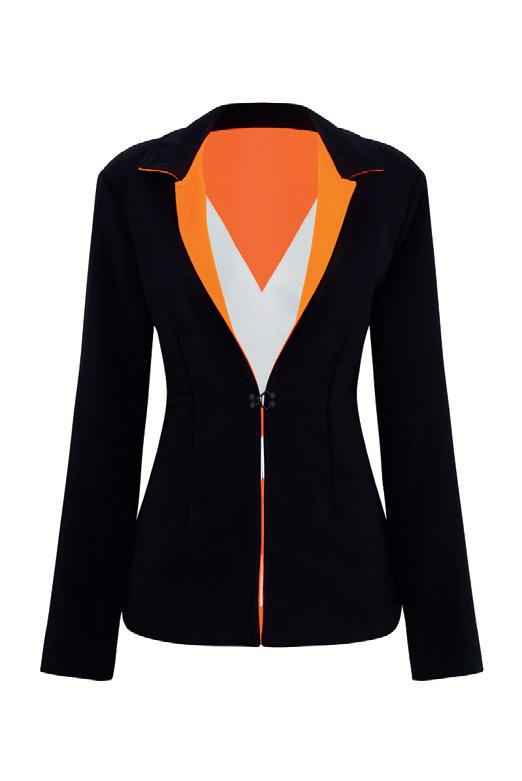
The Office2Site signature reversible jacket is designed to NSW rail standards. The jacket has been tested and meets the AS/NZS 4399:2017 with a UPF 50+ and AS/NZS 1906:4:2010 Reflectivity materials and devices, and high-visibility material for safety garments. The jacket is available to purchase in sizes six to 24.
Office2Site provides a stylish solution for women who work in industries that require them to wear high-visibility personal protective equipment, such as mining, manufacturing, construction and transport. The Office2Site reversible jacket meets compliance standards, and helps women engage on-site and manage an office environment.
Office2Site
www.office2site.com.au
Hospital-grade disinfectant
Whiteley Corporation’s Viraclean is a hospital-grade disinfectant used for infection control. It is effective against SARS-CoV-2 (the virus that causes COVID-19), which may be present on healthcare surfaces. The result of years of intensive research into advanced cleaning and disinfecting technology, the product provides effective surface cleaning, particularly of high-touch areas (ie, doorhandles and benchtops). Effective surface cleaning combined with good hand hygiene will assist in protecting staff and patients throughout the winter season, which has a higher incidence of colds and flus.
Viraclean is a ready-to-use product with a pleasant fragrance. It is pH neutral with good materials compatibility.
The Viraclean label lists that it is proven to kill: Acinetobacter; Candida albicans; Coronaviruses including SARS-CoV-2 (COVID-19); Enterococcus faecalis (VRE); Escherichia coli (E coli); Hepatitis B Group virus; Herpes Simplex virus; Influenza virus; Klebsiella pneumoniae (CPE/CRE); Proteus vulgaris; Pseudomonas aeruginosa; Salmonella choleraesuis; and Staphylococcus aureus (MRSA or Golden Staph).
Whiteley
www.whiteley.com.au
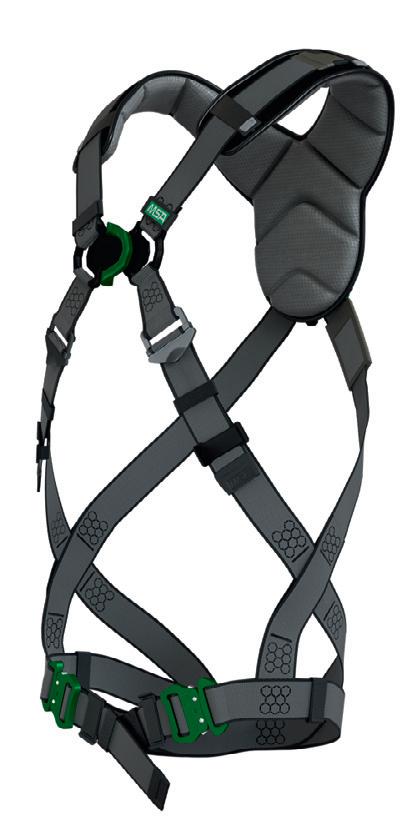
Harness line
The V-SERIES harness line from MSA is designed to be highly comfortable for the user.
Because the safest fall protection harness is one the user will actually want to wear, each V-SERIES harness includes added comfort features — so the wearer can focus on their work, not their harness.
An exclusive racing-style buckle allows for a close, comfortable-fitting harness — eliminating the need for bulky chest straps or cumbersome buckles. The racing-style buckle creates an athletic cut, contouring the harness to the body for improved upper torso movement on the job. Pull-down adjustment allows the wearer to quickly get the right fit that lasts throughout the workday.
The MSA V-SERIES harness line has been designed to offer comfort at every level.
MSA Australia Pty Ltd
au.msasafety.com
CASE
STUDY Wearable solution lifts strain of shoulder injuries
Soter Analytics has launched SoterCoach — a wearable solution designed to prevent injuries in the workplace. Reported to be the first of its kind to the market, SoterCoach builds on Soter’s original wearable solution (developed to prevent back injuries), which forms the cornerstone of the new technology. The new device is interchangeable between the shoulder and back, featuring a graphically pleasing management dashboard and an upgraded userfriendly app that boasts multiple ergonomic coaching programs. The solution consists of a 2 x 3 cm lightweight clip-on device providing real-time biofeedback coupled with a personal app exhibiting data and in situ micro-learning, accompanied by an online dashboard. The combination has resulted in high user engagement and has proven to reduce the risk of injury in manual handling industries. “Putting ourselves in the shoes of our clients — truly understanding their problems, barriers and facilitators, and engaging in empathetic listening, we are now so proud to launch our new SoterCoach solution that has been built off the back of direct customer feedback,” Soter ©stock.adobe.com/au/Catalin Pop Analytics founder and CEO Matthew Hart said. Soter partnered with St John of God Subiaco Hospital in Western Australia to build the shoulder training functionality, based on direct feedback and insight from wearers. The design team used feedback to address issues that were discouraging use — such as wearability, weight, size, app engagement and encroachment — to build a product that is easily deployable and user-friendly. Feedback has shown a 98% positive rate of engagement for the manual handling training programs. Five years of user experience has allowed Soter Analytics to build a product that is up to professional standards. The wearable solution has been proven by multiple case studies, white papers and a team of doctors, engineers, ergonomists, movement specialists and data scientists, with parameters backed by international safety standards for musculoskeletal safety in the workplace.
Soter Analytics
www.soteranalytics.com

Wet-dry vacuum
Designed to handle the toughest of industrial clean-up jobs with ease, EXAIR’s EasySwitch Wet-Dry vacuum uses either a standard or HEPA certified filter when vacuuming dry material. The conversion to vacuuming liquids is fast and easy — simply release one latch and remove the filter element. EXAIR’s EasySwitch Wet-Dry Vac rests upon any 205 L drum. Its powerful vacuum generator has no moving parts and uses no electricity, so there is little concern for failed parts, motor failure or personnel safety associated with using electric vacuums for liquids. Operation is a quiet 79 dBA without the need for additional noise-muffling accessories. Accessory options include either a standard or antistatic vacuum hose, drum dolly for convenient movement, plastic or premium metal tool attachments, spill recovery kit and tool holder.
Applications include emptying coolant sumps, vacuuming chips, clean-up of floor spills, drains, shavings, sawdust, absorbent, mould and allergen removal, as well as general-purpose applications like vacuuming floors, machines, workstations, industrial machinery and equipment.
The CE compliant EasySwitch is the latest addition to EXAIR’s large selection of Industrial Housekeeping products, including the Reversible Drum Vac, High Lift Reversible Drum Vac, Chip Trapper, High Lift Chip Trapper, Chip Vac, Heavy Duty Dry Vac and Heavy Duty HEPA Vac.
Compressed Air Australia Pty Ltd
www.caasafety.com.au










